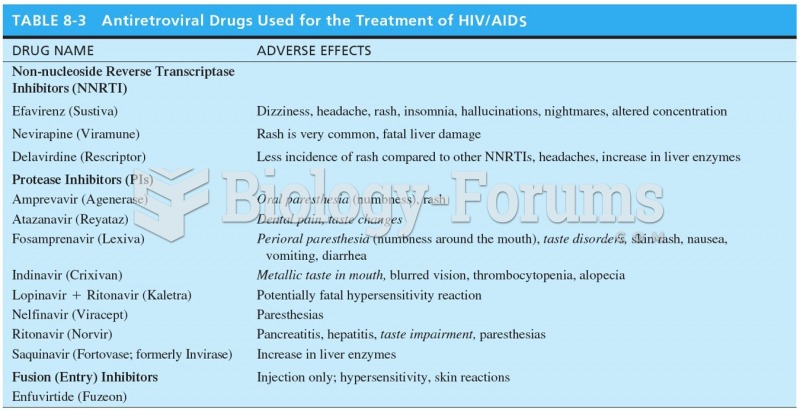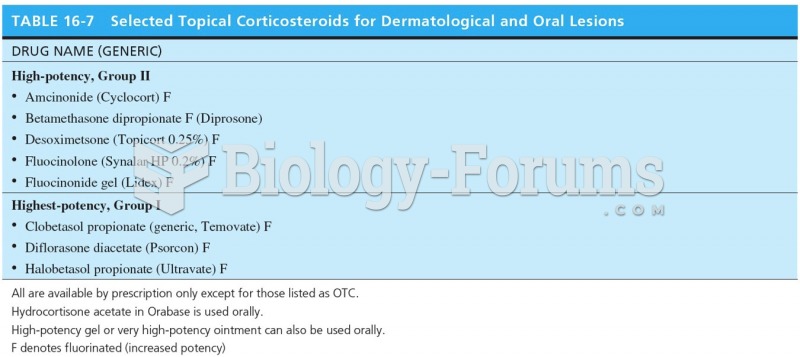Answer to Question 1
1,3
Rationale 1: Onset of drug action represents the amount of time it takes to produce a therapeutic effect after drug administration.
Rationale 2: All medications have a peak plasma level.
Rationale 3: Duration of drug action is the amount of time a drug maintains its therapeutic effect.
Rationale 4: Peak plasma level and plasma half-life (t1/2) are related but not strictly dependent on one another.
Rationale 5: The effectiveness of a drug is not dependent on half-life as long as dosing frequency is correct.
Global Rationale: Onset of drug action represents the amount of time it takes to produce a therapeutic effect after drug administration. All medications have a peak plasma level. Duration of drug action is the amount of time a drug maintains its therapeutic effect. Peak plasma level and plasma half-life (t1/2) are related but not strictly dependent on one another. The effectiveness of a drug is not dependent on half-life as long as dosing frequency is correct.
Answer to Question 2
1,2,3
Rationale 1: Large molecules have difficulty crossing plasma membranes by simple diffusion.
Rationale 2: Ionized drugs have difficulty crossing plasma membranes by simple diffusion. These drugs may require carrier, or transport, proteins to cross membranes.
Rationale 3: Water-soluble agents have difficulty crossing plasma membranes by simple diffusion.
Rationale 4: Diffusion assumes that the chemical is able to freely cross the plasma membrane. Drugs may also enter through open channels in the plasma membrane; however, the molecule must be very small, such as alcohol.
Rationale 5: Diffusion assumes that the chemical is able to freely cross the plasma membrane. Drugs may also enter through open channels in the plasma membrane; however, the molecule must be very small, such as urea.
Global Rationale: Large molecules have difficulty crossing plasma membranes by simple diffusion. Ionized drugs have difficulty crossing plasma membranes by simple diffusion. These drugs may require carrier, or transport, proteins to cross membranes. Water-soluble agents have difficulty crossing plasma membranes by simple diffusion. Diffusion assumes that the chemical is able to freely cross the plasma membrane. Drugs may also enter through open channels in the plasma membrane; however, the molecule must be very small, such as alcohol or urea.







